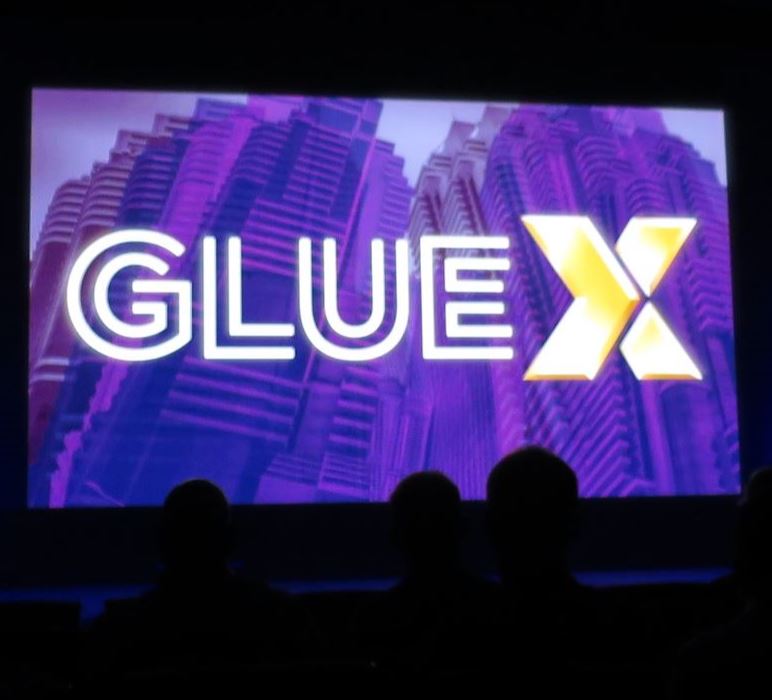IT Glue shared plenty of details yesterday at its 2019 GlueX partner conference about product enhancements available now or coming in the next few months. But included in the same presentation as well were glimpses of what users of the company’s managed services documentation solution can expect to see longer term—more integration and more automation.
The first of those should be familiar to anyone who follows Kaseya, IT Glue’s corporate parent since last December. The company has been talking up code-level, air-tight “workflow integrations” (as opposed to mere API-based “cosmetic integrations”) across its IT Complete family of products for some time. Following a string of acquisitions over the last 18 months, that family now includes BDR vendor Unitrends, compliance and network assessment vendor RapidFire Tools, cloud-to-cloud backup vendor Spanning, and security vendor ID Agent in addition to IT Glue.
“You’re going to continue to see the integration between all of the products enhanced, as well as the workflows between the various products,” said Jim Lippie, Kaseya’s general manager of cloud computing, at GlueX in a conversation with ChannelPro.
That very much includes IT Glue. “It’s not going to overwhelm our roadmap, but it’s something that we’re going to continue to work on slowly and continue iterating on,” says Nadir Merchant, the company’s general manager. “It’s something that we can do with every vendor, but we can do it substantially better with Kaseya products because we can control both sides, or at least influence both sides, more deeply.”
Already, he notes, technicians can connect directly to an endpoint from within its corresponding IT Glue configuration file thanks to integration with Kaseya’s VSA remote monitoring and management system. Integration with ID Agent’s dark web monitoring solution due within four months, meanwhile, will soon update IT Glue automatically any time a user’s credentials are spotted on the cybercrime black market.
Kaseya plans to make taking advantage of capabilities like that more affordable by offering discounted pricing on bundled combinations of its solutions. GlueX attendees, for example, have access through the end of the week to a promotional subscription to IT Glue’s MyGlue password management system plus ID Agent’s Dark Web ID and BullPhish ID security awareness training system for $395 over a three-year term, versus the $625 they would spend to buy those products separately. More offers like that will be coming in the future.
“Part of the IT Complete strategy really allows us to be a lot more aggressive with pricing than we would be as independent businesses,” Merchant observes, because they can cross-sell more than competitors and spend less on net new client acquisition. “Our expectation is that we should be 25% cheaper than anything else on the market because of this kind of synergy, and because of this large existing customer base that we’re selling into.”
The automation part of IT Glue’s vision follows closely from the integration part. At present, according to Merchant, the company does a good job of generating documents without manual intervention. “We integrate with over 23 tools, and we create tons of documentation in IT Glue. It’s not perfect, but we’re doing very well,” he says.
The next step, though, is to enable automated action based on those documents. For example, tagging devices for inclusion in one of IT Glue’s user-defined “flexible assets” is currently a manual process. “A person has to go and do that, and if you go install a new switch at that client’s site, you have to go remember to update that flexible asset,” Merchant notes. Someday, though, users will be able to define rules for what goes in a flexible asset one time and leave the work of detecting and adding new devices to IT Glue.
Similarly, the system lets users link documents manually at present. “It’s pretty nice, people love it, but there’s no reason why we can’t do it for you,” Merchant says, by proactively seeking out and highlighting appropriate document associations.
The earliest examples of such features are slated to start appearing within the next three to four months, but it’ll be substantially longer before users begin enjoying their full potential. “It’s going to take a few quarters before it’s ubiquitous,” Merchant says. “It might take a couple of years to get really, really amazing.”
In the meantime, Merchant intends to devote plenty of development resources to less ambitious but widely requested updates as well. Most of the changes showcased at GlueX yesterday, such as the ability to segment passwords into folders with individualized security controls, stem directly from user input.
“Password management is a big part of our roadmap right now because there were a lot of small, annoying features of password management that just weren’t quite there,” Merchant says. Fixing those issues boosts customer satisfaction, something IT Glue wants to do through product upgrades more broadly.
“We’ve gotten very wide with our feature set, meaning that we added more workflows and more types of features to IT Glue instead of iterating over existing features and dealing with some of the small pain points that MSPs have had,” Merchant says. “We’re doing a good job of rectifying that now. We’re maybe halfway done.”
Though it’s been part of Kaseya for some nine months now, Merchant emphasizes, IT Glue remains in complete control of decision-making about efforts like that.
“Things are more or less operating as usual. We still operate as an independent business unit of Kaseya. Our operations are entirely out of Vancouver as they’ve always been. Our product strategy is all independent. So not a whole lot has changed there,” he says. “We are a part of the family and we are invested in IT Complete, and we’re going to continue to work on those, but aside from that, things are more or less the same.”
According to Lippie, that goes for all of Kaseya’s recently acquired holdings. Kaseya’s businesses collaborate closely, and Kaseya CTO John Durant oversees their R&D programs. Beyond that, however, they’re mostly autonomous.
“They see how we operate and we’re able to give them operationally best practices in how they instrument their business and how they can become better in certain areas,” Lippie says. “At the same time, it’s been very important from the very beginning that the market knows that they are an independent organization that will continue to do the things that they’ve done for their customers successfully from the very beginning.”
That includes integrating with platforms beyond IT Complete. “They work in the ecosystem seamlessly with a lot of the other players in the market,” Lippie says.













